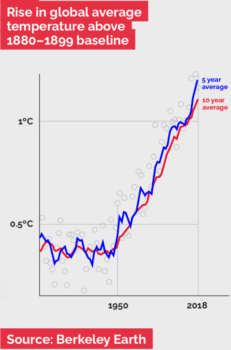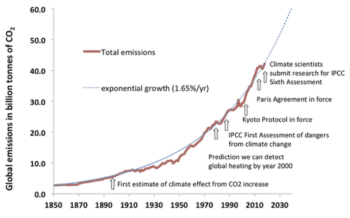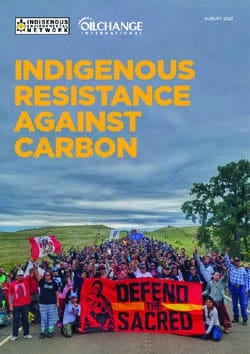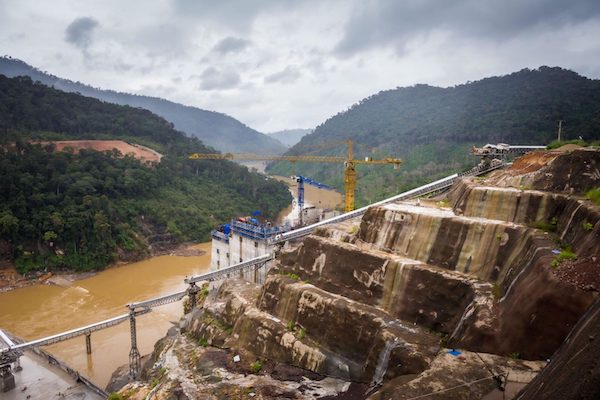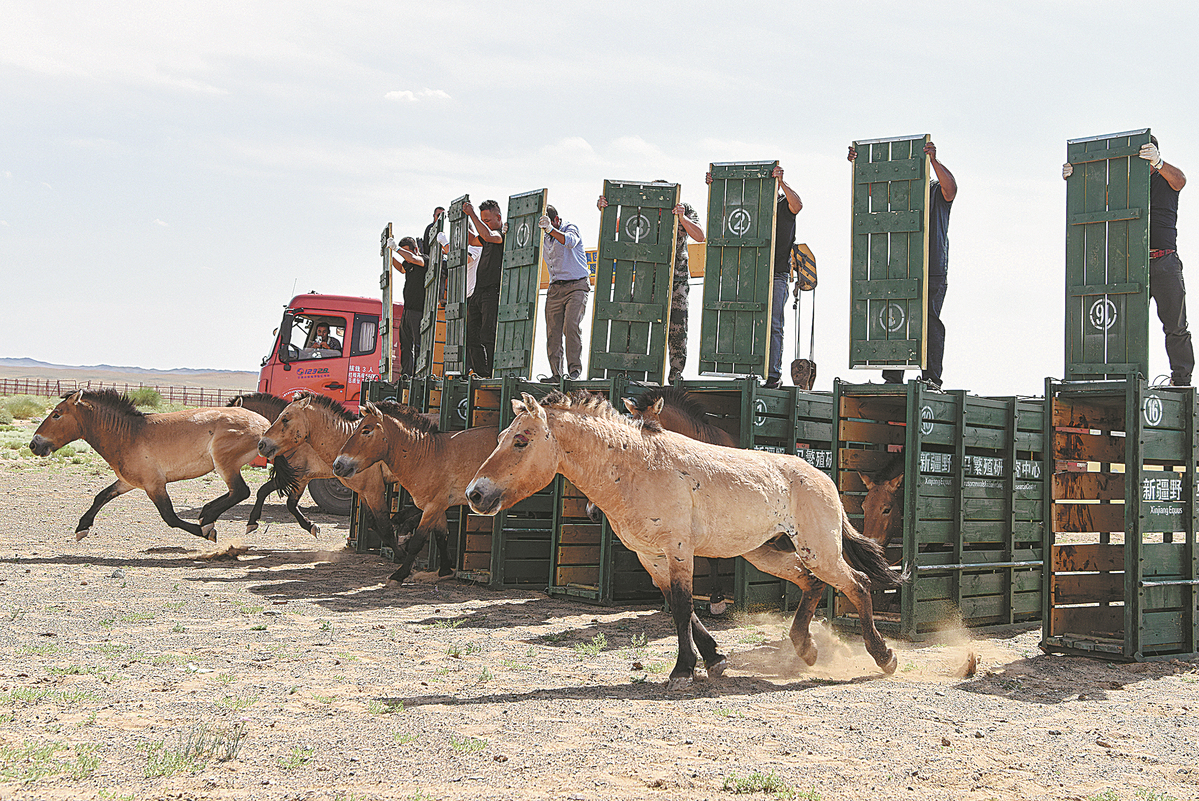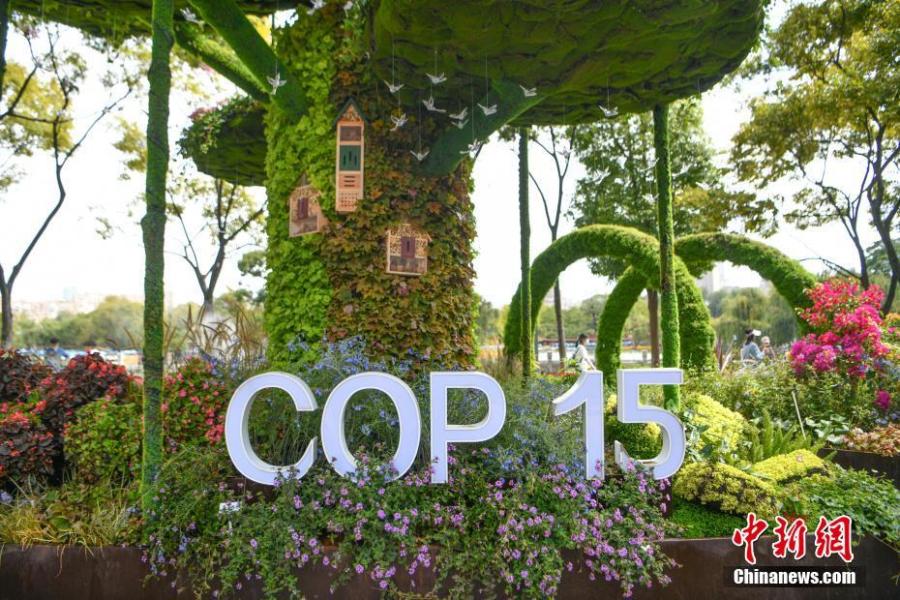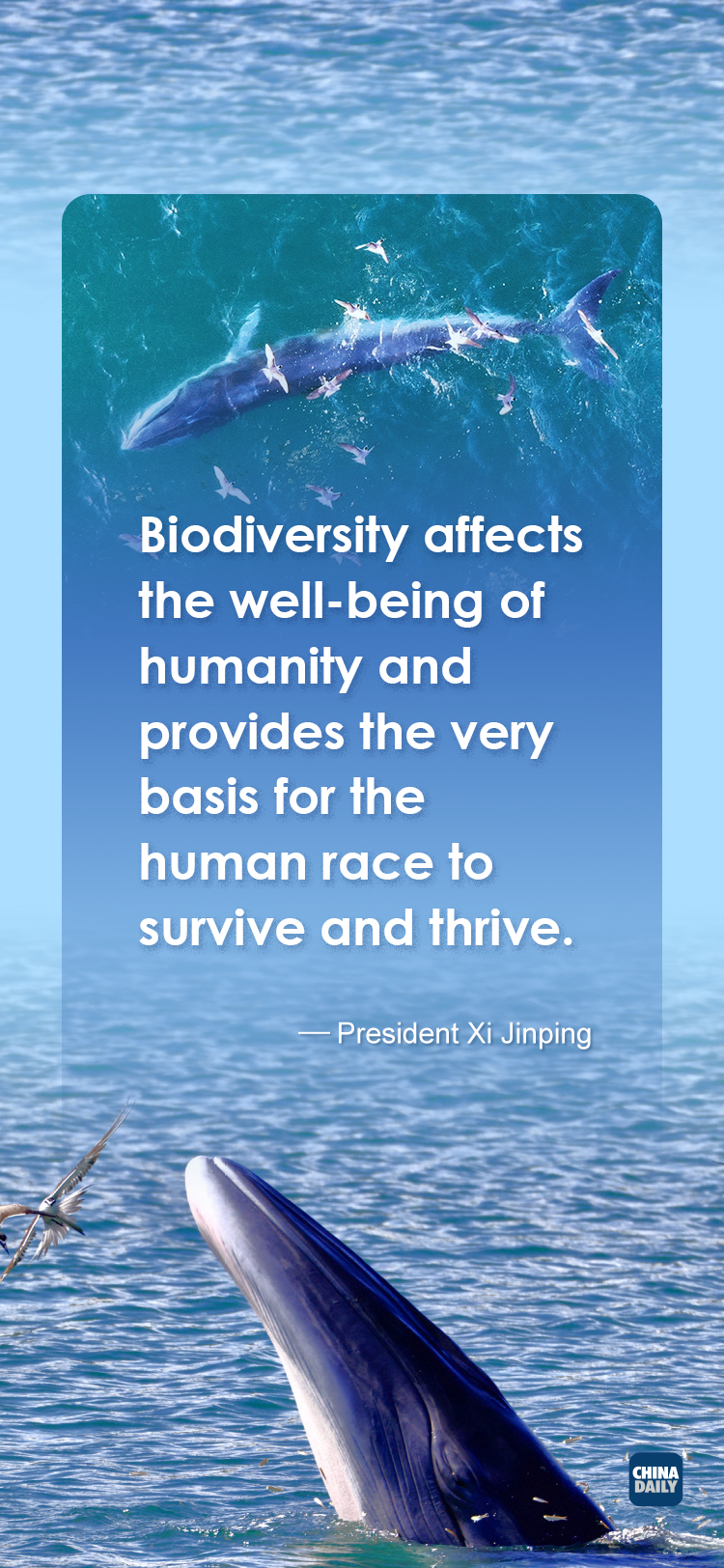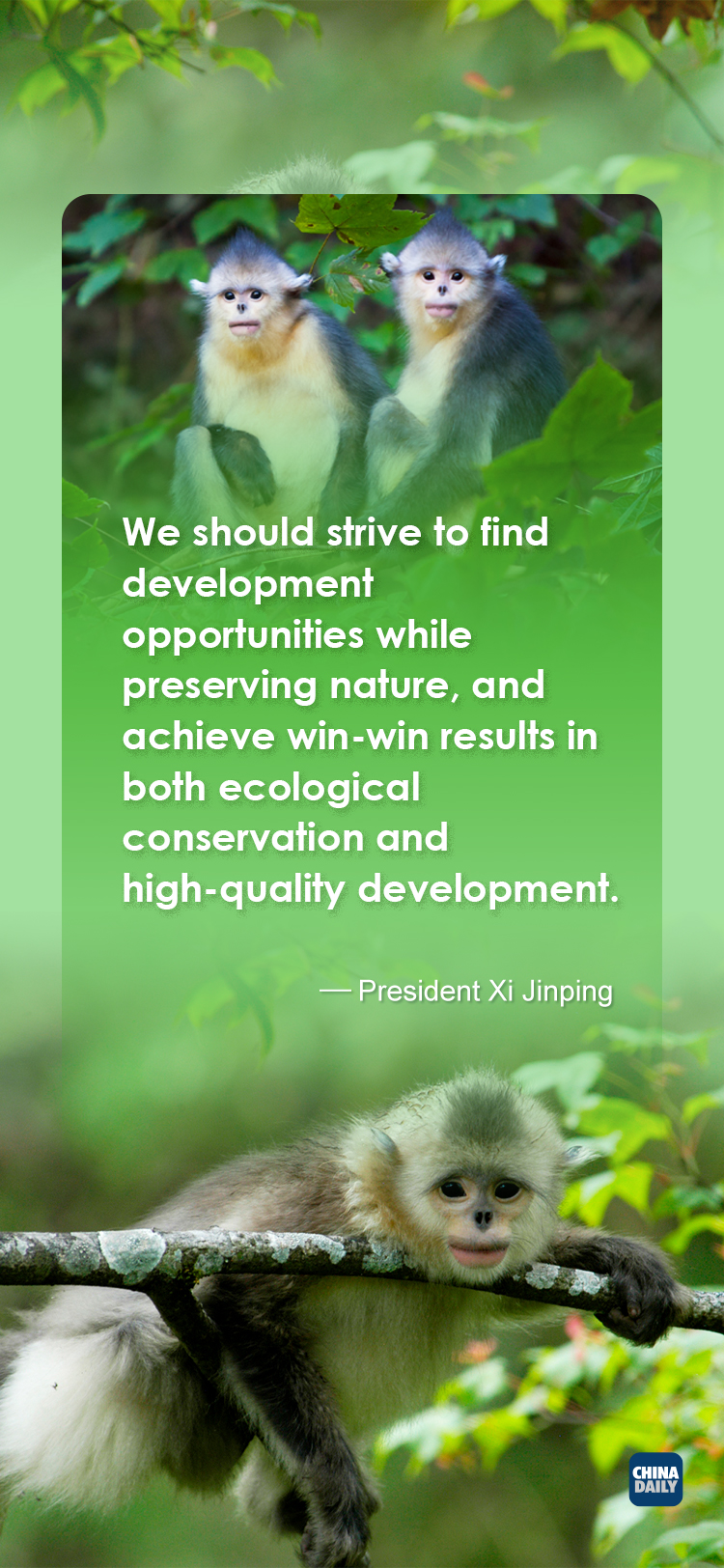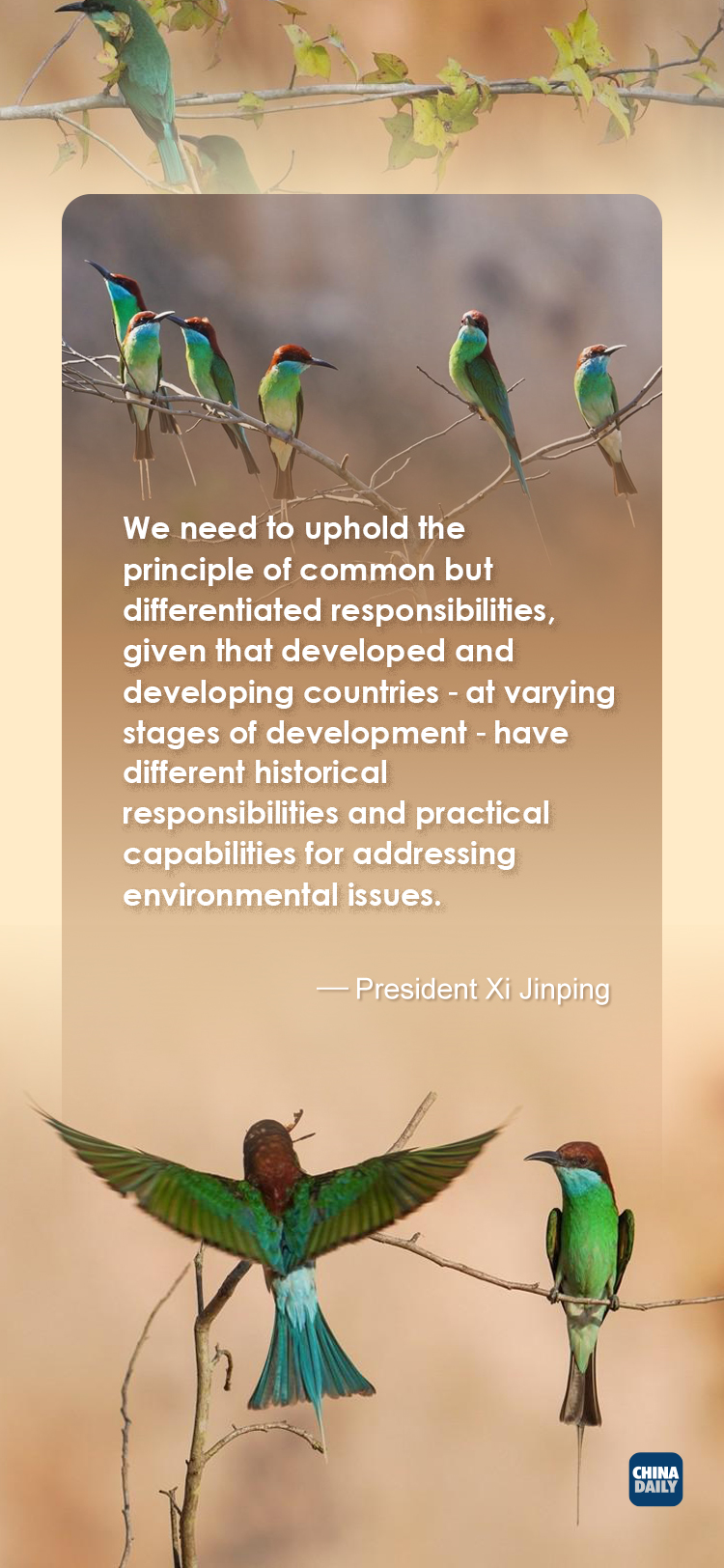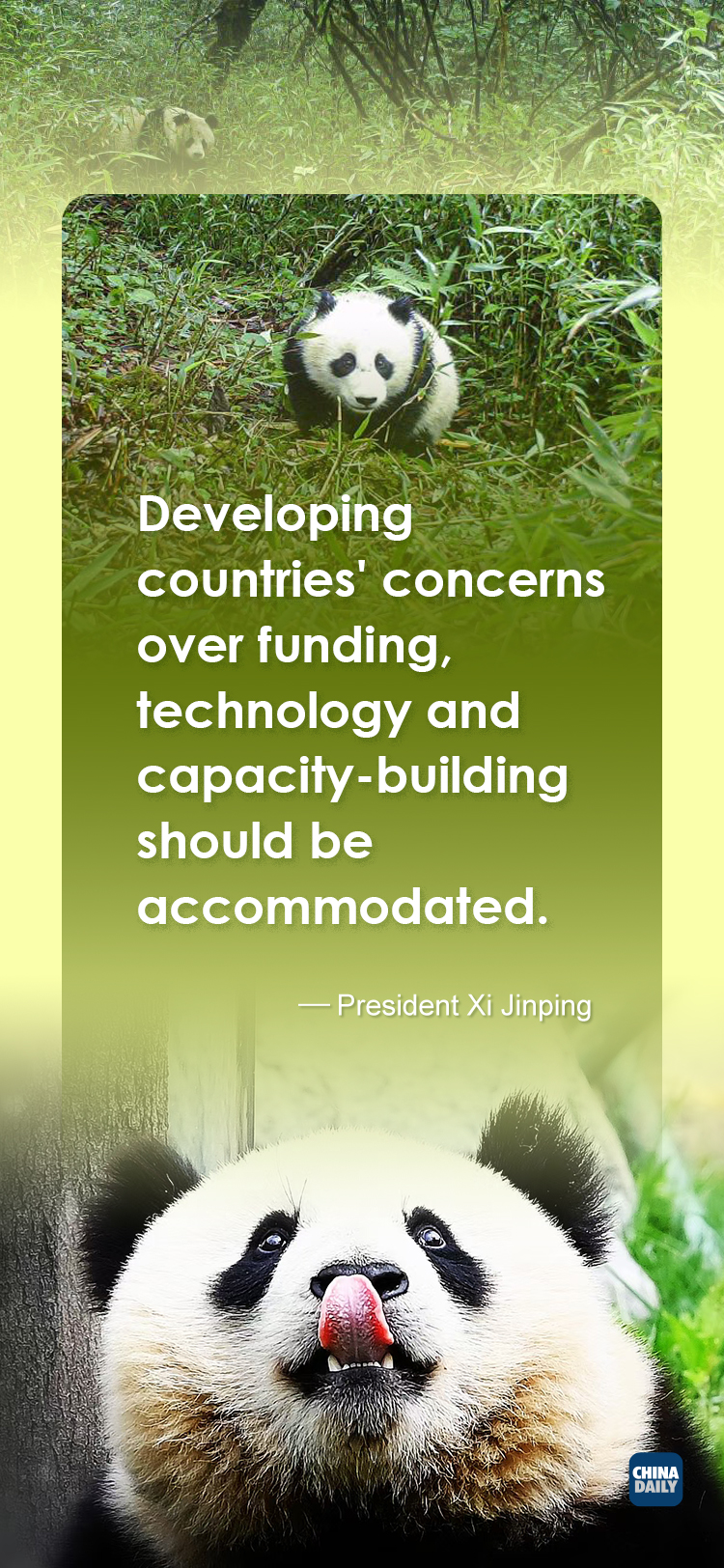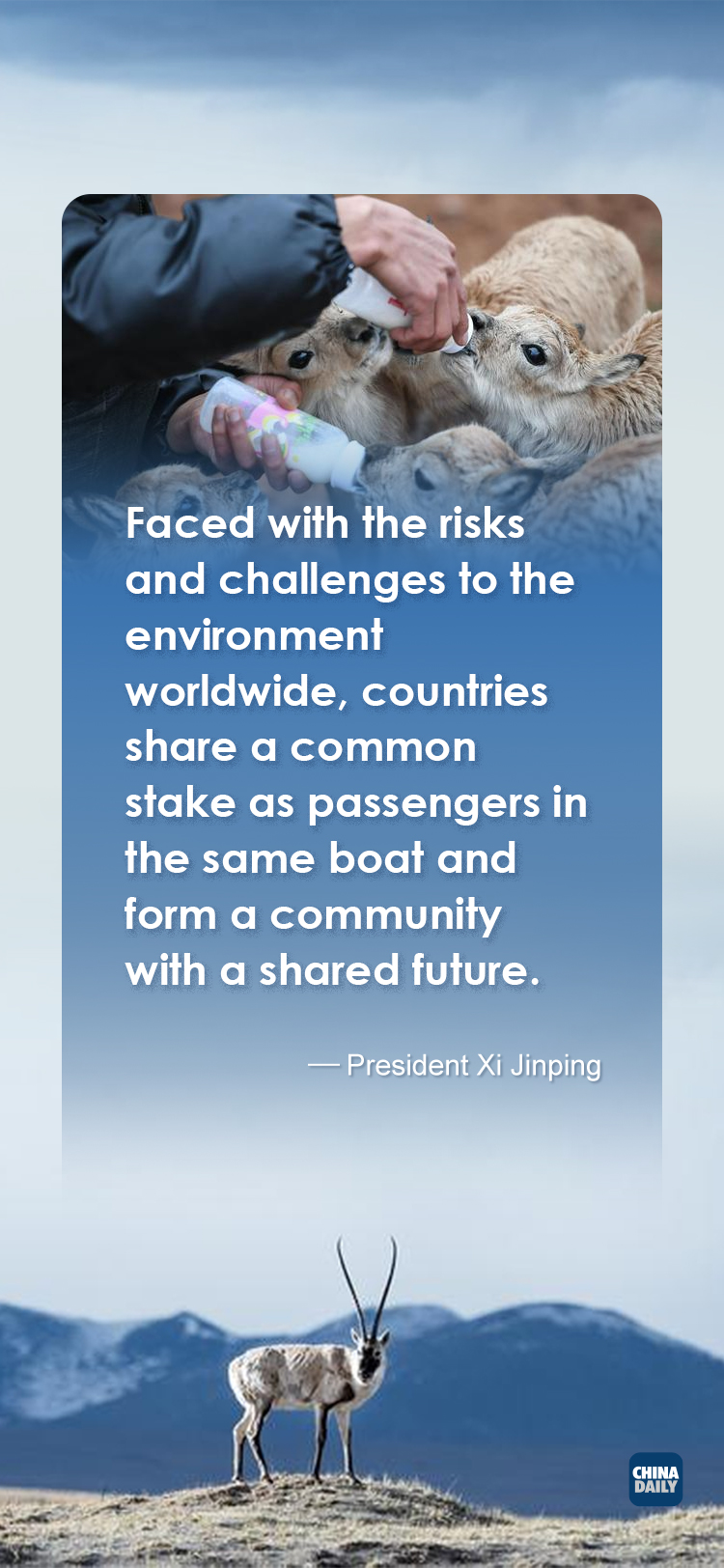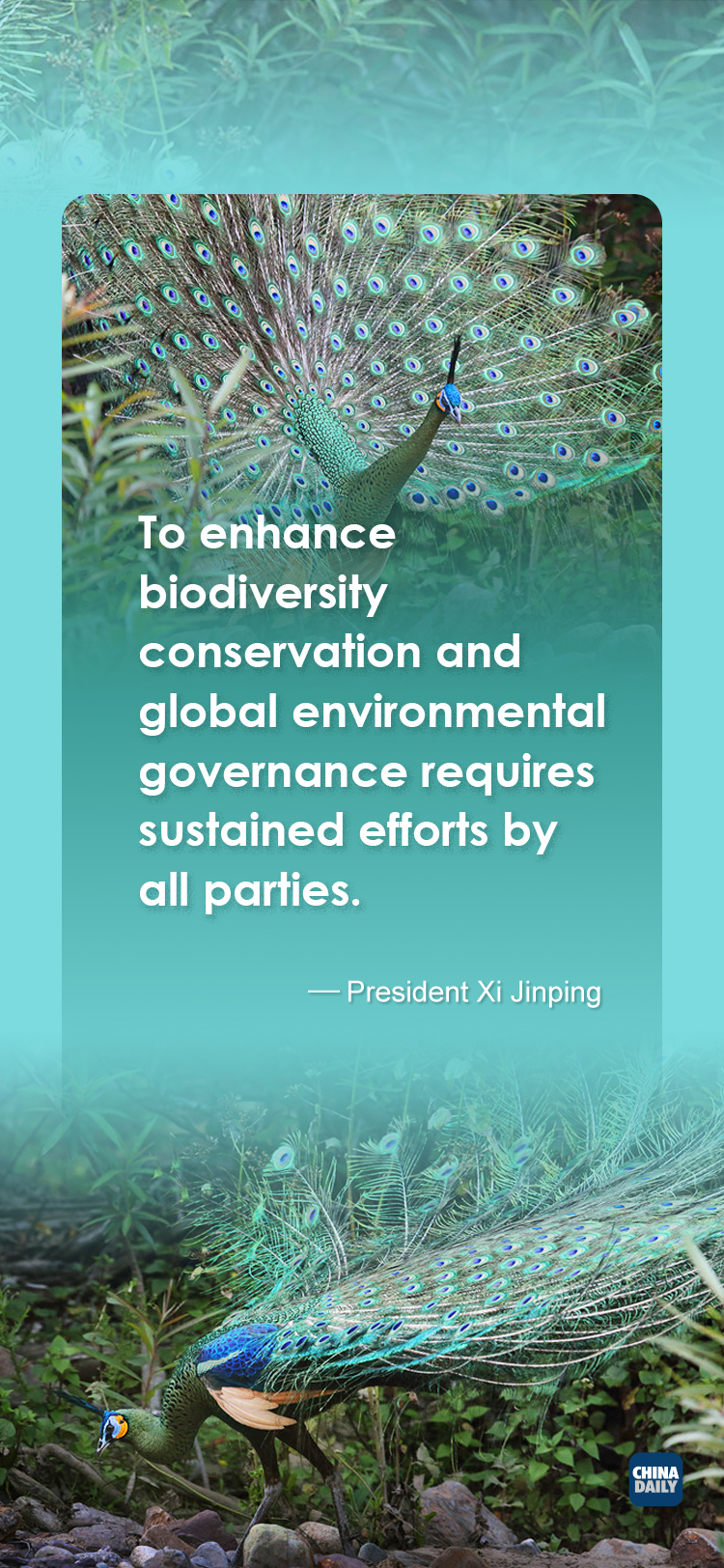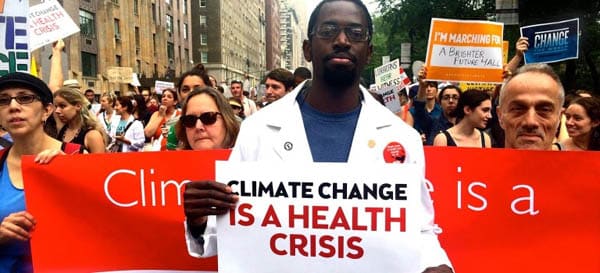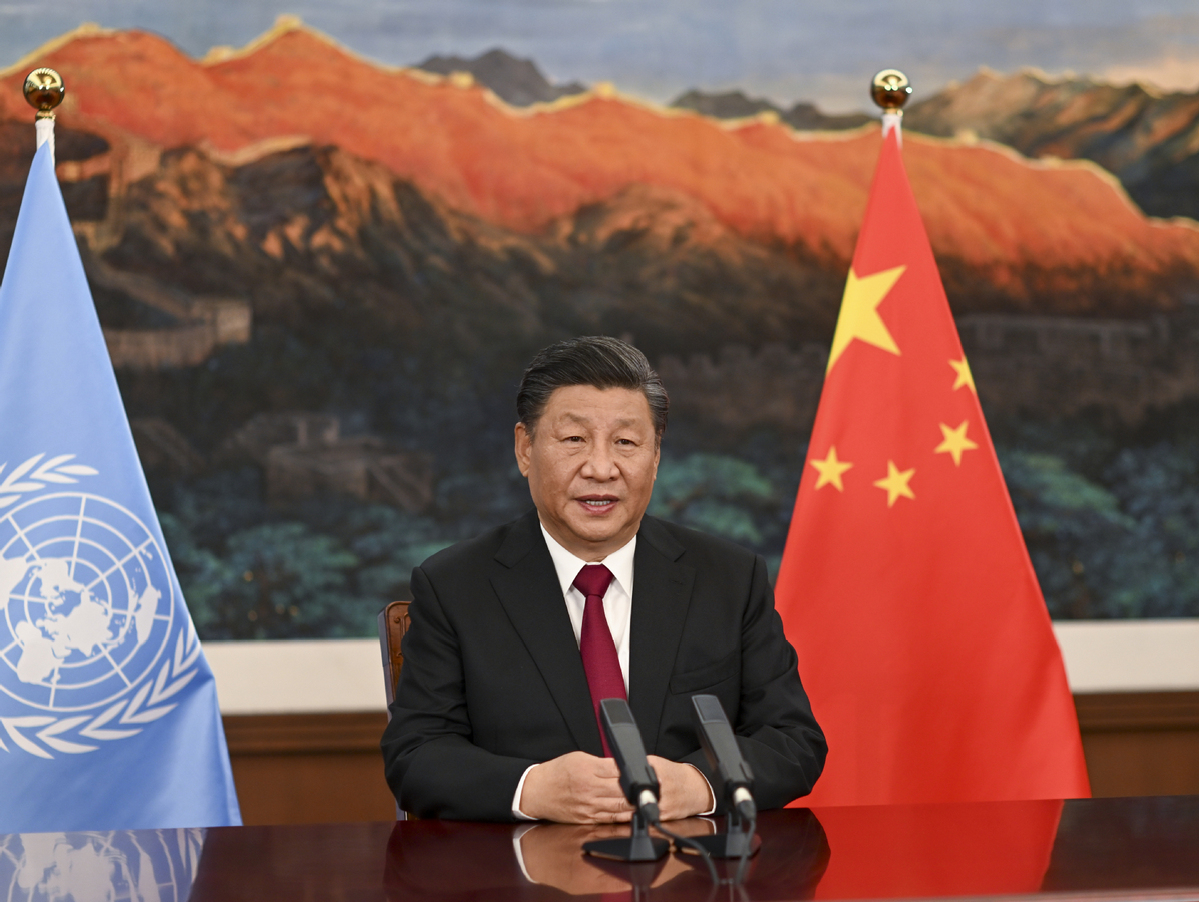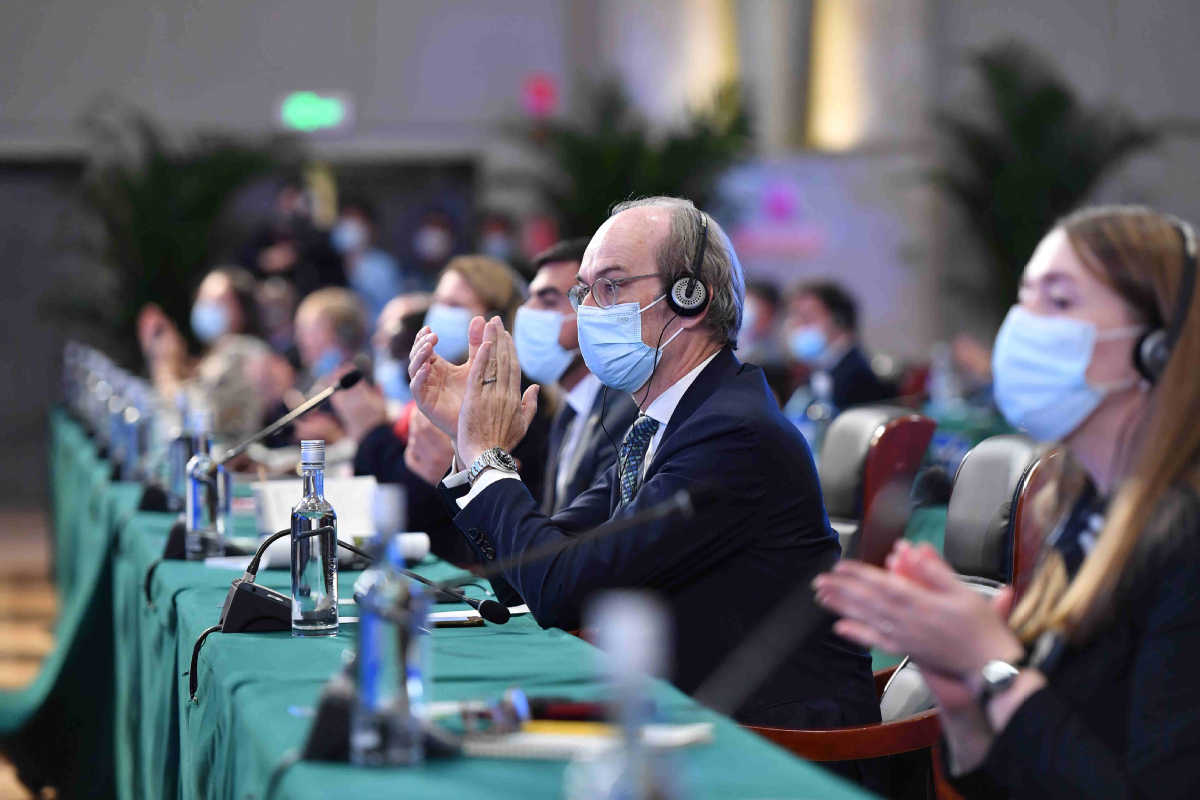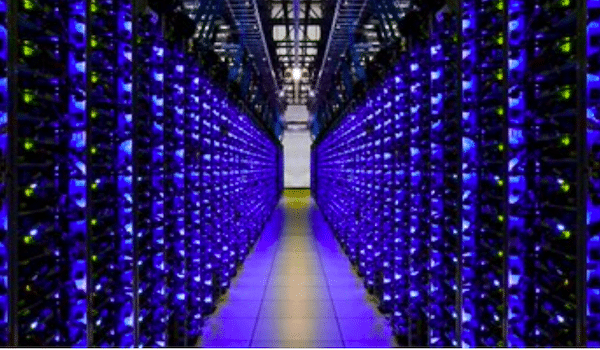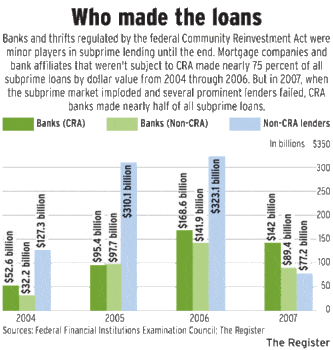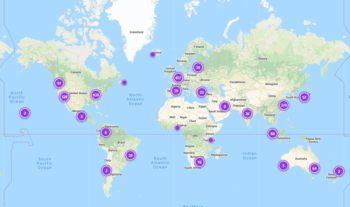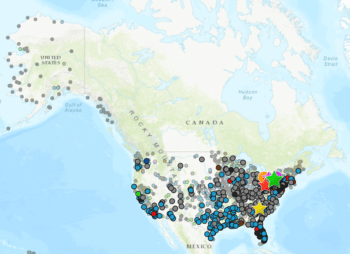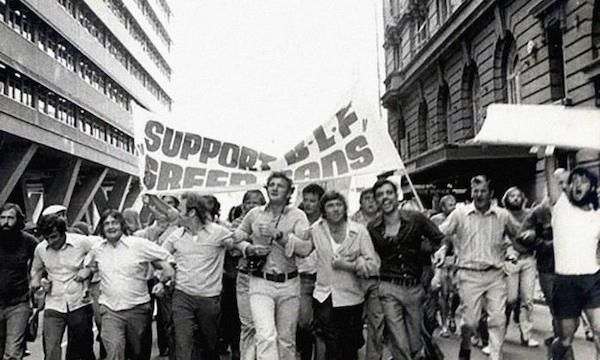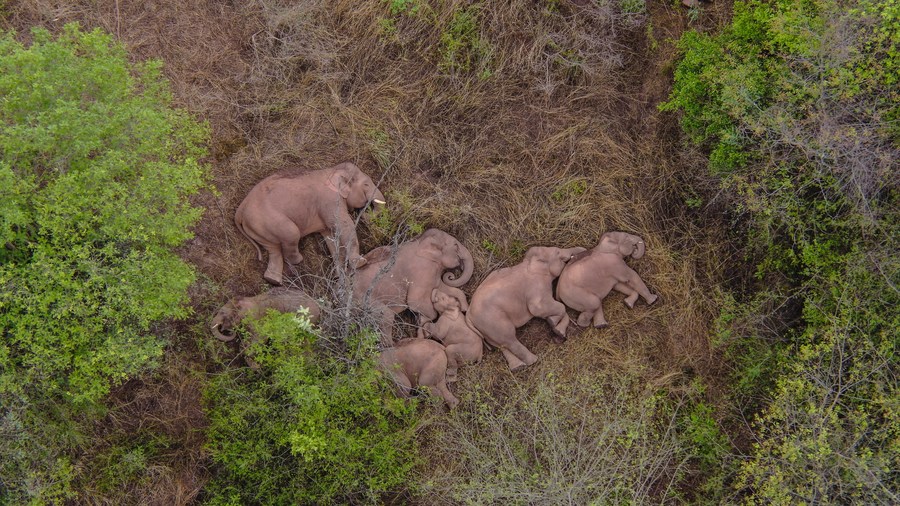FROM THE GREEN REVOLUTION TO THE GREEN TRANSITION
Clara Sanchez
4 Oct 2021 , 9:07 pm .

The logic of the Green Revolution has dominated world food plans (Photo: Archive)
WORLD FOOD SUMMITS (1963–2021)
After the Second World War, the United Nations has developed a few times, among its main summits and conferences , the issue of food or food systems, as 2021 has been called. What has been promoted? What have been your goals? What is its fulfillment? Who are its main actors? And under what global context have they been carried out?
These questions and their answers highlight the relationship between power and food in the world that, incidentally, will not be different this time.
FIRST WORLD FOOD CONGRESS (1963)
In 1963, through FAO, the first World Food Congress was held to promote the agrarian development plan at the world level, better known as the Green Revolution, although it was not yet called that, directed mainly to the countries in development, particularly to promote the use of seeds with high genetic yield and greater use of fertilizers, whose objective was to increase food production in the face of the problem of population growth in the world as a key strategy for the fight against hunger, with the support from the Ford Foundation and the Rockefeller Foundation, among others.
A technological advance for modern agriculture, where food production went from being directly dependent on vital natural resources such as water and land to additionally needing oil and gas, making it dependent on hydrocarbons and, therefore, on a greater use of energy necessary for the development of this agroindustrial model and the need for various means of production such as seeds, machinery (tractors, harvesters, sprayers, fertilizers), inorganic fertilizers (N, P, K), agrochemicals (herbicides, fungicides, insecticides ), artificial irrigation, processing industry, silos and storage infrastructure, transportation, among others. Bringing with it, at the same time, the environmental damage that has been caused to the planet and the lack of sustainability.
To give an example, it is estimated that the use of fertilizers, the main input associated with the increase in crop yields at the beginning of the "Green Revolution", increased annually by 14% during the 1960s and has since been increasing by 10% every year.
Before this congress, guidelines had been issued for the use of surplus commodities as "development promotion", which were actually intended to contain communism by the United States from 1954, through public law. Lp-480; the World Seed Campaign for the installation of infrastructure worldwide; soil mapping; and even the Fertilizer Program, which was carried out within the framework of the World Campaign Against Hunger in 1961.
With this congress, a greater influence of the power of the United States began to control the supply of food in the world as part of its foreign policy, which began in 1940 and was reinforced in the 1960s with the creation of the Agency for International Development ( USAID), and the launch of the Food for the World Program in the same 1963, becoming the main food assistance program of the North American country abroad, laying the foundations for a permanent expansion of exports of agricultural products with benefits for the United States. United.
That was later reconfigured with the approval of Public Law Lp-808, moving from the elimination of surpluses to planned production for export, in order to meet world food needs.
The world context of this first congress was the end of the Missile Crisis, October Crisis (Cuba) or Caribbean Crisis (Russia), considered one of the worst scenarios of confrontation between the two first world powers during the Cold War in 1962: the Soviet Union (USSR) and the United States.
Crisis that affected a new direction in the foreign policy of the United States, revealed in June 1963 (same month of the Food Congress) by the American President John F. Kennedy, when he announced talks for the signing of a treaty and eventual nuclear disarmament between the USSR and the United States, which historians consider truncated having been assassinated three months later.
In short, with this first congress that attracted the attention of the world in a way never seen before , it became clear the conviction "that at the mercy of the progress of science and technology was possible to free the world of hunger (...) through economic development and balanced social, human and natural resources ".
And specifically, in addition to the worldwide promotion and installation of the Green Revolution, it served as an object for the creation of the World Food Program (WFP), which the FAO and the United Nations worked since 1961, coincidentally since the same year that the United States created its Office of Food for Peace as a projection of its foreign policy.
FIRST WORLD FOOD CONFERENCE: END HUNGER IN 10 YEARS (1974)
In 1974, the first World Food Conference was held so that "within a decade, there would be no child who had to go to bed without having satisfied his hunger, no family that feared for the bread of the next day and that, not even the future, nor will human capacities be impaired by malnutrition. "
On this occasion, the eradication of hunger in ten years was proposed by increasing food production in the developing world, but also in developed countries, improving food consumption and distribution, with the establishment of a better security system. world food, trade organization and agricultural readjustment.
The expansion of markets for exports from developing countries, as well as for emergency relief and food aid, was suggested. Although the problem of agricultural trade was really the controversial topic throughout the Conference.
Conference that recognized the fundamental role of fertilizers and pesticides in increasing food production, setting the goal of achieving a desirable balance between population and food supplies.
From this space, the reduction of military expenditures was promoted to increase food production, the seed industry, food assistance to the victims of wars in Africa; and the IBRD proposed the joint organization of a program to help developing countries improve the performance of their fertilizer factories.
It was originally raised at the Conference of Non-Aligned Countries held in Algiers from September 5 to 9, 1973 and later by the Secretary of State of the United States, Henry Kissinger, during the 28th Session of the General Assembly, the same month, considering according to his observations the existence of a "growing threat to the world's food supply", for which the United States "proposed that a World Food Conference be convened in 1974, under the auspices of the United Nations , in order to examine means of maintaining an adequate food supply, and to harness the efforts of all nations to address hunger and poor nutrition as a result of natural disasters. "
The context of this summit was the World Oil Crisis, which in the last four months of 1973 and in the first part of 1974, posed serious problems of fuel shortages and increased prices, and also generated shortages and high prices of fuel. fertilizers.
The same year in which Henry Kissinger, former United States Secretary of State and national security adviser in the midst of the oil crisis, during the governments of Richard Nixon and Gerald Ford, raised the relationship between food and strategic natural resources in the presentation of an energy independence bill for the United States in 1974, holding that "whoever controls food will control the people, whoever controls oil will control nations"; therefore, food became a national security issue .
At this time, it was debated whether the Green Revolution had begun to lose its initial momentum, which depended on the continued increase in the use of fertilizers, which in that world context were scarce and expensive, but beyond what were considered some caveats. It was stated that there were no technical reasons to suppose that the Green Revolution had nothing more to offer, and although there were other conditions at stake, the program was aimed at increasing food production; To maintain its momentum, it needed the availability of essential factors of production, especially fertilizers, that is, to guarantee supplies of natural gas.
The term Green Revolution, first used by USAID director William Gaud on March 8, 1968 during a talk at the International Development Society, held in Washington, when he referred to the accelerated diffusion of technology : "These and other developments in the field of agriculture contain the elements of a new revolution. It is not a violent red revolution like that of the Soviets, nor is it a white revolution like that of the Shah of Iran. But rather, what I call a Green Revolution based on the application of science and technology. "
Hence the terminology with which the United States' food power policy for the containment of countries during the cold war is coined and "destined to obtain new techniques for the production of food in the conditions of the so-called Third World."
However, this Green Revolution was not only a purely technical impulse designed for the non-industrialized countries; Those who carried it out were the main North American corporations related to the agri-food and hydrocarbons sector in order to specify US foreign policy.
Ten years later, in 1984, in the midst of economic globalization (1981-1990), the goal of eradicating hunger since 1974 had not been met, with 450 million people being hungry according to the FAO, while the WHO stated that they were 850 million, and UNICEF suggested that 40 thousand children died daily from this scourge. However, it was still being argued that it was due to poor harvests and the increase in population that had to be brought to zero, according to the Club of Rome, to reduce food consumption.
On the other hand, it was maintained that the main cause of the slow growth of food production in developing countries lay with government institutions and services that did not respond to the needs of farmers.
However, world cereal production was increasing by 9-10%, raising estimated supplies at the beginning of the 1984-85 season to the highest level ever achieved.
Since then it has become more and more evident that the increase in world production did not automatically guarantee, by itself, access to available food for the people who needed it most.
WORLD FOOD SUMMIT: HALVING HUNGER (WFS-1996)
To solve the problem of hunger that the Green Revolution did not solve, in 1996 another event considered historic was convened: the World Food Summit, whose objective was to reduce by half the number of hungry people in the world, that is, to 400 million, by the year 2015.
It was once again seen as a landmark event for discussion on one of the most pressing issues facing world leaders in the new millennium: the eradication of hunger.
It was called for widespread malnutrition and, again, growing concern about the ability to meet future food needs.
On this occasion, 22 years later, FAO stated that the objective set in 1974 "was not achieved for various reasons, including failures in policy formulation and financing", estimating that, unless accelerate this progress, there could remain some 680 million hungry people in the world by 2010, of which more than 250 million would live in sub-Saharan Africa. "
The context of this summit was the end of the Cold War and the imposition of a New World Order, characterized by the rise of the United States as a hegemonic power. In the midst of the "renewal" of the multilateral organizations, in charge of regulating international free trade, accompanied by the creation of the World Trade Organization (WTO) in 1995, where the countries of the socialist bloc were incorporated, at the same time as The neoliberal era happened with the application of the adjustment measures imparted by the IMF, particularly in Latin America, which led to the processes of privatization and transnationalization with greater opportunities for North American groups.
The 1990s in which the United States "sought a Post-Cold War justification for its development" and that in the agricultural area began in 1990, when George W. Bush signed the Food, Agriculture and Conservation Act as a reform to the Lp -480 of 1954, in which it begins to move from only foreign policy to the issue of "food security".
Concept approved by FAO in 1996 at the World Food Summit, being adopted by all the countries of the world up to the present, being drawn up in Point 1 of the Plan of Action: "When all people have physical and economic access to food at all times. enough safe and nutritious food to meet your dietary needs and food preferences for an active and healthy life. "
It stressed the need for further and significant increases in world food production through the sustainable management of natural resources to cope with population growth and improve diets, in combination with food imports through international trade, already established, to strengthen food security in each country.
And finally 1996 is constituted with technological change, in the introduction in the world agri-food system of genetic engineering and genetically modified seeds, becoming the main resource for the production of food associated with the same agro-industrial matrix deployed with the Green Revolution, and whose main protagonists are transnational biotechnology corporations.
WORLD FOOD SUMMIT: FIVE YEARS LATER (2002)
In 2002, the World Food Summit: Five Years Later sought to accelerate action to reduce hunger in the world, unanimously adopting a declaration that called on the international community to fulfill its previous commitment to reduce the number of hungry people around the world. 400 million for the year 2015, whose fulfillment was "disappointingly slow".
Of the total hungry, at least half of the world's most food insecure people were said to be poor small-scale farmers in low-income countries, and farming on marginal lands, who had to produce food in order to eat. What they needed. As if producing your own food was a sin. But the imposed model was not criticized, without access for small producers.
The global context was the attacks perpetrated on the United States, mainly on the Twin Towers, and with them the declaration of the War on Terrorism by George W. Bush, which began immediately with the unilateral US military invasion of Afghanistan.
And, of course, in this scenario, the president of the summit, the Prime Minister of Italy Silvio Berlusconi, considered that "besides terrorism, hunger was one of the biggest problems facing the international community" at that time. Because precisely terrorism was imposed as "the new threat" worldwide.
To advance the fight against hunger, greater political will, financial resources, technology and fairer trading conditions were proposed.
The new technological way to advance in this fight against hunger had been installed since 1996, and in 2002 the European Union and the United States faced each other in the debate for the liberation of the market for genetically modified (GMO) or transgenic products.
With the United States were mainly Canada, Australia and Argentina, who did not want limitations on the freedom of trade in transgenics, and on the other hand, the European Union that asked for a moratorium on these.
Among the agreements, the International Alliance Against Hunger was created, which in its declaration called on FAO to promote the research of new technologies, including biotechnology and the introduction of these to developing countries and economies of transition to take greater advantage of the opportunities that globalization represented, particularly in relation to agriculture and food security.
To this end, they ensured that the responsible use of biotechnology would be studied, shared and facilitated with a view to meeting development needs, as a way to contribute to increasing agricultural productivity in developing countries.
The current reality is that genetically modified products, in this case seeds, can be used only through patents that you have to pay for to gain access. At the same time that they ended up entering the world race for control of natural resources, therefore, of the planet's biodiversity, where a handful of corporations have come to control their sales in the world; that in 2020 reached 65% between Bayer-Monsanto, Corteva Agriscience and Syngenta.
WORLD SUMMIT ON FOOD SECURITY (2009)
In 2009, another event was convened in relation to food, by renewing the commitment to eradicate hunger from the planet as soon as possible. Among the most important issues to be addressed were food security, the effects of climate change, rural development and the economic crisis.
Precisely because the context was the Great Global Financial Crisis of 2008, triggered by the collapse of the housing bubble in the United States since 2006, the instability of oil prices in 2009 and the world food crisis between 2007-2008.
Food crisis generated, according to the same FAO , by the malfunctioning and manipulation of the markets, the speculation closely related between the rise in world food prices with the volatility and turmoil of the financial, mortgage and real estate markets triggered by the collapse of the US subprime mortgage market and, on the other hand, export restrictions in the staple food market.
In addition, the high cost of energy, making agricultural production and food processing and distribution more expensive through inputs such as fertilizers (see next image), seeds and pesticides, the use of agricultural machinery, irrigation systems and transportation. Not forgetting the biofuel industry, among others.
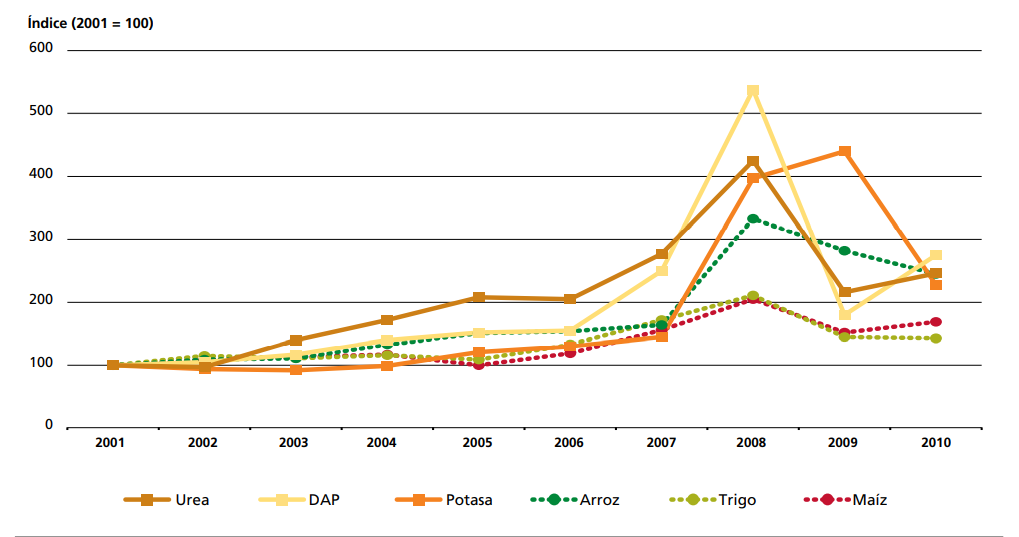

Increase in world prices of nitrogen, phosphorus and potassium-based fertilizers with impact on world prices of rice, wheat and corn (Photo: FAO)
At this time the "Second Green Revolution" was being debated, with which it was foreseen that in the next 20 years the increase in crop yields would be due mainly to the application of the technology already available, but pending to be fully applied, especially for raising its limit, accompanied by the need to further mechanize agricultural activities in order to replace the previous use of intensive labor, which would possibly not be available, due to the increase in migration of the rural population to the cities.
For rural development, the creation of conditions necessary for increased production was assumed, in particular through access to improved seeds and inputs, as well as for the adaptation of agriculture to climate change.
The concern in this case was about the deceleration of the maximum yield of the genetic potential of the crops, which needed to be raised to the top, and whose investigations in rice, wheat and corn were already advanced.
On the other hand, climate change begins to take center stage, arguing that, although there were different opinions, there was consensus on three things: first, the probability that extreme weather episodes would increase through strong storms, more floods and more droughts , more frequent and intense.
Second, the possibility that the best lands would enjoy even more favorable conditions, as well as the areas with the most floods and droughts suffering further devastation.
And finally, that all agricultural research aimed at overcoming the effects of heat, drought, and associated biotic and abiotic pressures, with many potential to contribute to ameliorating the potential negative effects of global warming.
Climate change that posed serious additional risks to food security and the agricultural sector. But with greater effects and special danger for small farmers in developing and least developed countries, as well as for populations that were already vulnerable. Because since 1963 the policies of those developed in these summits have always been directed at the poorest, the least developed and industrialized, who coincidentally continue to be in the same conditions.
At this summit, the use of biotechnologies and other new technologies and innovations was finally adopted for the creation of transgenic events that were "safe, effective and environmentally sustainable", always considering the growing demand for food, limitations in the amount of land and water. for food production.
In short, the FAO was finally betting on transgenics, after years of negotiation, to fight hunger in the world.
Even eliminating restrictions on the importation of these foods. And it is that, despite the positions against transgenic crops, between 1996 and 2009 the cultivated area increased from 1.7 million hectares to 67.8 million in 2003 and to 134 million hectares in 2009 and spread over 25 countries according to ISAAA (International Service for de Acquisition of Agri-Biotech Applications). Being the United States, Brazil and Argentina the largest producers worldwide.
With this new technological change called "Second Green Revolution", the most important trait of these crops is resistance to herbicides by introducing expressions in plants to make them resistant to glyphosate, or the well-known "terminator" seeds, which are They sterilize themselves after the first harvest, not being able to be used again, and presented by the large agribusiness transnationals since 2008 as the "future of agriculture", which will now do what the first revolution did not achieve: "solve the problem of hunger of the world "with the help of Genetically Modified Organisms (GMOs), inserted since the mid-90s.
And it is precisely genetically modified organisms or transgenic crops that, since 2004, at the 30th session of FAO of the Committee on World Food Security, are expected to be adopted as a vigorous "natural" instrument to give greater protection to the environment. ; and by the main agribusiness transnationals, such as Bayer, since 2008, made investments in the order of 3.4 billion euros until 2012 to continue research and development of new protection methods and plant varieties, ensuring that the Genetic engineering "will play a very important role in making plants less stressed, less susceptible to changes in the climate", therefore "they will make it possible to combat climate change and make better use of water".
Finally, this cycle of summits considered historic came to an end in 2015, without achieving the objectives that through the "Green Revolution" and the "Second Green Revolution" had been proposed. Again this year the Millennium Goals (MDGs) were not met in relation to reducing hunger by half.
Only 72 countries out of 129 reached the MDG goal of reducing the proportion of hungry in 2015, and of them 29 only achieved the ambitious goal of the World Food Summit (WFS) in 1996. Only 216 million people were released from the hunger and not the 400 million that had been raised.
FOOD SYSTEMS SUMMIT (2021)
In 2021, the United Nations Summit on Food Systems (CSANU) was held at the headquarters of the UN General Assembly, in New York, again with criticism for and against by the actors involved in its convocation.
The context, the global pandemic by covid-19, which was initially considered a threat to the world's food systems, amid the debate on the need for a new post-pandemic, post-capitalist order that goes further from a new economic model to a life sustained in equilibrium, against those who, considering the complexity of the current economic crisis, like Henry Kissinger , demanded "to safeguard the principles of the liberal world order", that is, to guarantee that everything remains as is It is and at the same time, from the World Economic Forum and the International Monetary Fund (IMF), the "great reset" of the global economy was promoted.
The latter have called for "pressing the reset button of capitalism" for a "new social contract" post-pandemic, due to the evident "long-term rupture in economies and societies", therefore, they consider that it is "the moment of a great reboot of capitalism. "
And according to Klaus Schwab, founder and executive president of the World Economic Forum, taking into account climate change as the next global disaster, with more dramatic consequences for humanity, it is necessary to decarbonize the economy, and in this context there is a need to evolve the current economic model, this time putting "people and the planet at the center", with what they have called "the era of the fourth industrial revolution" and a "new green economic system", whose accelerated transition is underway precisely because of covid-19.
Meanwhile, from the UN, Secretary General Antonio Guterres has called for transforming food systems , not only to eradicate hunger, but to reduce the incidence of food-related diseases and heal the planet, considering that "food systems they were failing and with the coronavirus pandemic they were getting even worse, "for which immediate action is necessary in the face of an imminent global food emergency, with long-term repercussions, particularly due to interruptions in supply chains.
And, in short, that the transformation of food systems is necessary in the context of climate change, because they contribute 29% of all greenhouse gas emissions, including 44% of methane, with negative effects on the biodiversity, which is why it is necessary to support and effect the "green transition".
Green transition that, in relation to the global agri-food system, is already underway because genetically modified organisms are precisely those considered to face climate change and global warming since 2004.
However, in this context a new technological change is imposed that began to expand precisely in the middle of the global pandemic: food 4.0, 3D bioprinting, food tech ( food and technology ), synthetic meat or of the future, but which has been spreading to other edibles, with replicas of milk, mayonnaise or ice cream using artificial intelligence, Big Data and other technologies to recreate food flavors, aromas and textures under two pillars: ecology and health.
And, in this sense, the richest in the world have started the race for control of this new technology and investments in relation to the global agri-food system, including Bill Gates, who has become the largest owner of agricultural land in the United States. United, not because of their concern for the climate, but because of their interest in seed science and biofuel development , just as Jeff Bezos is investing in land, mainly in Texas; but also the Rockefeller Foundation and different partners that have brought together more than 1,300 collaborative organizations focused on building new food systems.
Now, with this new way of making edible products in their different versions, whether from soy protein, but also from cell culture of animal origin, using samples of genetic livestock and vegetable breeds, a new revolution is expected. in the production of food created in laboratories under the label of "higher quality, healthier and more ethical", which means that they will leave less environmental footprint than the food consumed today. But that will obviously unleash a new race for the control of biodiversity.
Among the objectives, to develop the so-called "flexitarian" diet that will avoid or reduce the consumption of meat in the world to reduce the emissions of methane gas from livestock, and with it the reduction of global warming, reproducing cells and muscles that will later pass to hamburgers or steak.
The new way of fighting against climate change, reducing the catastrophic effects that are expected while promising, once again, to guarantee with these foods, food security for the 9 billion people estimated in the world by the year 2040, the which will be impossible to continue producing with less arable land and irrigation water available because "it is simply not possible to produce enough meat for everyone to eat the way people do in richer countries."
And finally, as supposedly the demand for meat in the world is already pushing the environment to its limits, and only the agri-food system would add enough additional temperature to bring global warming to more than 1.5 degrees, for which "we are all responsible. "It is not precisely the populations of the least developed, poor and hungriest countries that contribute to this emission, on the contrary, it is the populations of the most developed countries that have the highest consumption per person per day, call it the United States or the United Kingdom, among others.
The truth is that in 2021, 25 more years after 1996, there are 768 million people or 9.9% of the world population hungry , with 418 million hungry in Asia, 282 million in Africa, 60 million in Latin America and the Caribbean and 8 million between North America, Europe and Oceania.
And according to the Prevalence of the Food Insecurity Scale (FIES), there are 2.368 million people in moderate and severe food insecurity, indicating 30.4% of the world population without access to adequate food due to lack of availability or resources economic to buy food.
FINAL THOUGHTS
Since 1963, each World Food Summit has served to reinforce the model installed with the Green Revolution , with which it was not possible to feed the entire population, even with record harvests each year, and bringing with it the complexes of wheat, corn, soybeans and rice accounted for 60% of the calories consumed, changing diets, leading to a process of land grabbing, where 1% of large companies exploited 70% of the planet's agricultural land.
In addition, it is responsible for large areas of deforestation and forest burning and promotes the sale of highly dangerous pesticides, especially for developing countries, with which schools or entire towns near the planting fields continue to be sprayed, and impacting in biodiversity. It even aims to turn water into another commodity.
Being able to affirm, in the framework of the World Summit of 2021, that if there is a failed food system, that it has failed, it is precisely this model of agro-industrial production implemented since the first World Food Congress, whose stated objectives of ending hunger are not They were fulfilled, nor will they be fulfilled, and what has been reinforced is a food hegemonic power closely related to the energy that is needed to function, dependent on fossil fuels, particularly hydrocarbons, highlighting the relationship between food and international competition for strategic natural resources such as oil and gas, but also, land, water and biodiversity.
And if there is something that demonstrated the global crisis due to the coronavirus as stated by Pope Francis , it was "the failure of the capitalist system" and that "the market alone cannot solve all problems, no matter how much one may ask to believe. in this dogma of the neoliberal faith. " So true that it cannot even end hunger in the world, making 58 years after installing the Green Revolution make the same hegemonic food power decide the need to "transform food systems" through the so-called "green transition" .
But furthermore, the reality is that the world economic model, including this way of producing food, is protected by unsustainable practices for the planet that not even the economic slowdown during the first year of the pandemic will have a significant long-term impact in terms of emissions. of carbon dioxide or other greenhouse gases, because it continues to depend on the same energy matrix for its operation: oil, coal and gas, its main sap, which comprises more than 83% of current energy demand and It is the source of three-quarters of global greenhouse gas emissions (see image below).

Global greenhouse gas emissions sector by sector, year 2020 (Photo: Our world in data)
And it is that oil continued to have the largest part of the world energy mix (31.2%) in 2020, followed by coal, which is the second most used fuel in the world, representing 27.2% of total primary energy, consumption that had a slight increase compared to 2019.
In third place, natural gas continued to rise to historical highs of 24.7%, while hydroelectric energy represents only 6.9%, renewable energies only 5.7% and nuclear occupies 4.3% of the energy matrix (see next image).

World energy matrix, year 2020 (Photo: Food and Power)
And even if it is believed that the "green transition" is just around the corner and that by reducing the number of animals we will immediately solve part of the problem, because supposedly 11% less water, 8% less land, and even 24 % less nitrogen and 18% less phosphorus, that is, fertilizers, in itself the production model is not changing.
Therefore, " let's change the system " on which you want to "evolve", the one you want to restart, because what has happened during each world food summit is the reinforcement of the same hegemonic power around food to maintain the status quo implemented with the Green Revolution, which this time is no different.
It is the rearrangement of the main actors of the international system seeking to control the food supply in the midst of the global competition for natural resources, deciding what will be eaten on the planet, and at the same time guaranteeing food security for their populations, while they travel their way. towards a supposed and immediate "green transition" without losing its status of power, at the same time that the world moves towards what has been called " tripolarity " and which will surely set the context for future food summits.
Originally published in Food and Power on October 4, 2021 .
https://misionverdad.com/investigacione ... cion-verde
Google Translator



